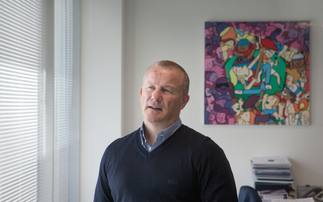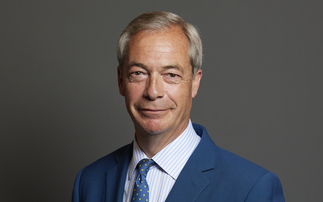Many investors have come to expect bouts of volatility once or twice a year, where the very powerful emotion, greed, is overcome by the even more powerful fear.
The fears tend to relate to the same issues; slowing growth/recession, over valuation, inflation, externalities (Avian flu, Terrorism) and so forth, but generally investors have learnt that equity markets tend to recover, so buying on the dips, or sitting on your hands, has proved to be very rewarding. Every crisis that now appears still tends to be greeted with surprise, but investors have become increasingly willing to believe that the recovery, V shape or otherwise, is just around the corner. There is a danger that such behaviour is becoming engrained, much like in March 2000 where there was a belief that investors would continue to buy on the dips despite the fundamental overvaluation of Technology related shares. This proved to be true for a while, despite the warnings coming thick and fast from increased volatility, until eventually the evidence became too stark for investors to ignore and the Bear market began.
March 2000 may also be used to illustrate another feature of investors’ behaviour; momentum investing leading to increased portfolio concentration. There is substantial evidence that investors tend to like to buy securities that are appreciating, which can give rise to the herd mentality, as more and more people begin to recognise that a certain theme, or asset, needs to be in their portfolio. In turn this leads investors to raise assets from areas that they are disappointed by, in effect selling current losers to buy current winners. As the theme or asset continues to appreciate it is very likely that investors become more convinced of the Bull case and concentrate their assets into a narrower and narrower selection of correlated securities, for instance Technology, Media and Telecoms shares. The net impact of this is that when the momentum disappears, fundamentals reassert themselves and the “Diversified Portfolio” of securities is proved to be nothing of the sort and spirals ever downwards, destroying wealth in a very short period of time.
The reason I have chosen to remind readers of these events is that I feel there is a danger that we may be about to see a repetition of these factors. The rebound in markets occurred in March 2003, nearly 5 years ago, during which time we have experienced various bouts of greed turning to fear and back again. Investors have prospered from the “Fed Put”, meaning that interest rates tend to be cut to bail out security markets, and indeed this has worked. The behaviour of buying momentum on the dips, or holding tight, can be seen and I also believe that investors have once again allowed their portfolios to become much more concentrated than perhaps they realise. Momentum has been present in Credit related assets (Property, High Yield Bonds, Structured Finance, Leveraged Hedge funds) and also Emerging Market themes (Commodities, Emerging Equities, Emerging Market Debt) and investors have been handsomely rewarded, but perhaps that’s the problem. As the rewards have been good these assets naturally become larger parts of the portfolio, just by growth, let alone the normal behaviour of adding to winners. Medium term losers continue to be beaten up as the last investors capitulate to buy the excitement of recent winning shares, think Japanese Equities or Investment Grade Corporate bonds for instance.
To be able to overcome these issues I think it is apparent that investors need to remind themselves of some of the rules of investment:
- Disciplined diversification provides protection
- Must set a forward looking strategy (current momentum may disappear)
- Where possible, invest with specialists
The Cazenove Multi-Manager Diversity fund adheres firmly to these principals in the pursuit of achieving strong risk adjusted returns. There is a Strategic Asset Allocation of 1/3 Equities, 1/3 Fixed Interest and Cash and 1/3 Alternatives, to ensure diversification at all times despite the latest investment fad. A forward looking strategy is applied by tactically allocating within these areas, for instance the fund currently has high weightings towards Cash and Government Bonds relative to High Yield and Emerging Market Debt. Few Cautious Managed funds have chosen to use alternative investments as part of their Asset Allocation, but we believe that diversification is optimised by allocation to strategies that have low, or no correlation, such as diversified Hedge funds and Agricultural commodities. Furthermore the Diversity fund uses a Multi-Manager approach to ensure that the highest quality Specialist managers are selected to further enhance returns.
Volatility is rising and market momentum is changing. Portfolios that were constructed only 6 months ago are going to look increasingly vulnerable to the new market environment. It is time investors consider their strategy to cope in adversity and embrace diversity.
Marcus Brookes, Head of Multi-Manager, Cazenove Capital Management












